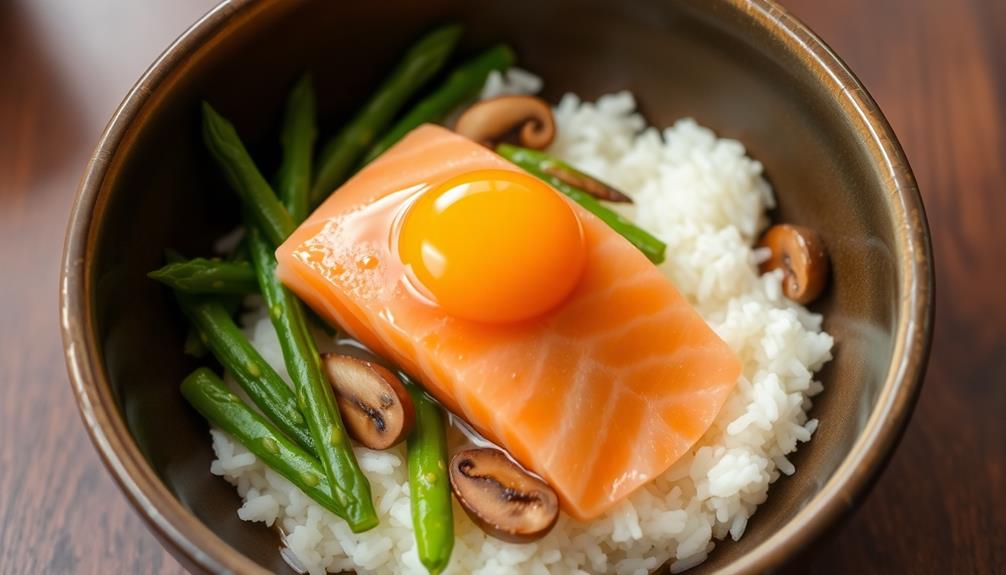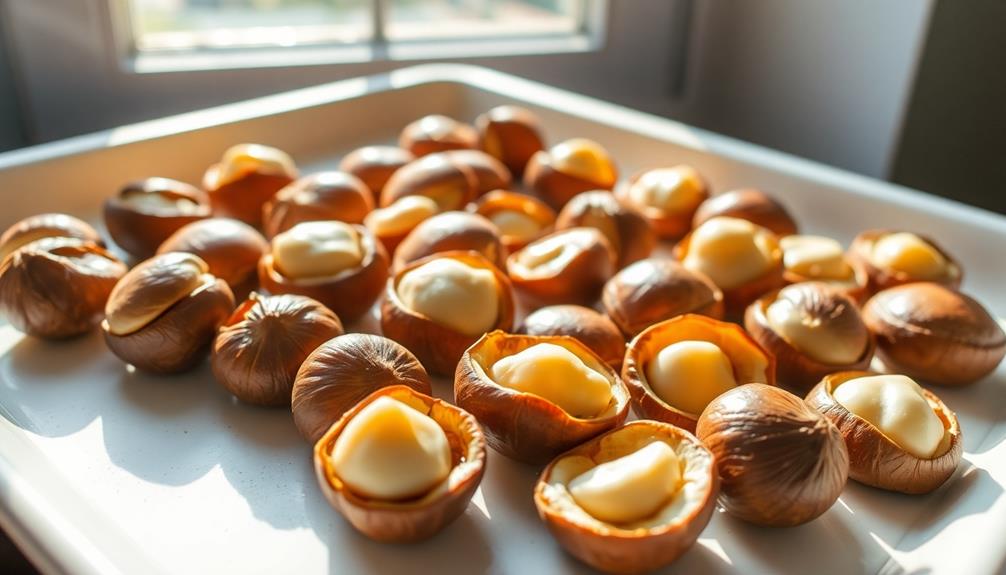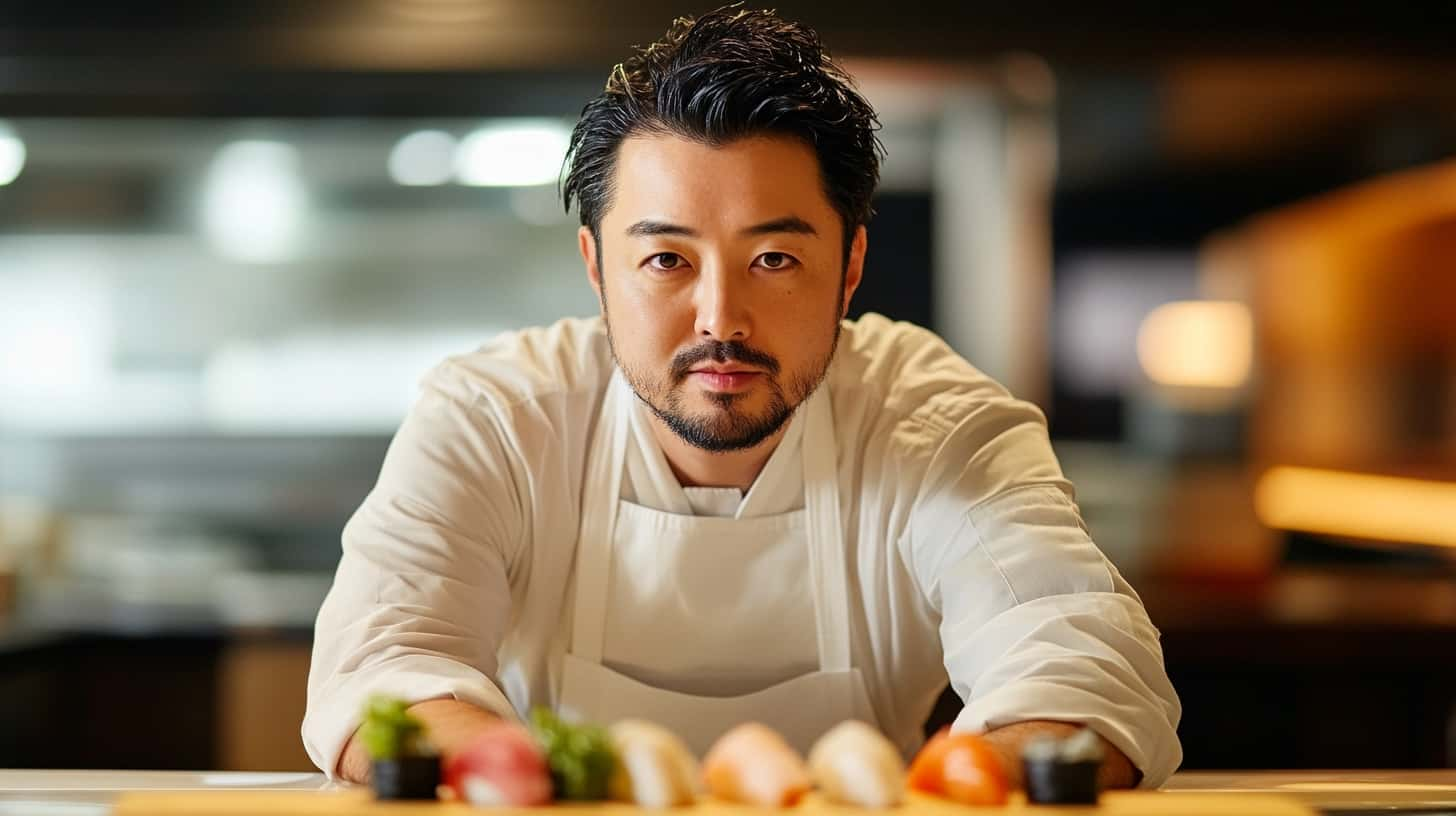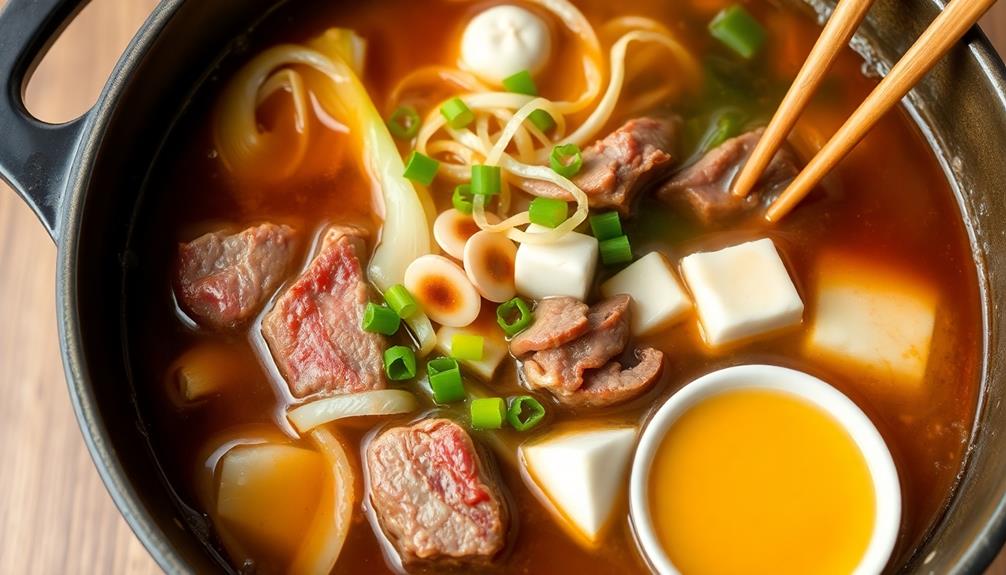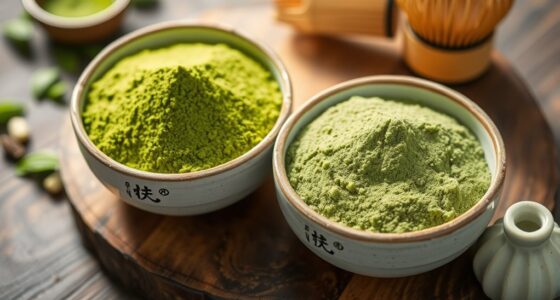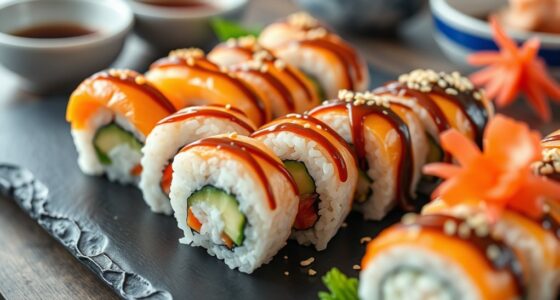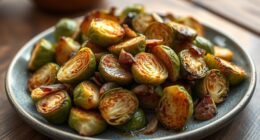You may be familiar with the concept of a multi-course meal, but have you ever experienced the culinary art form known as Kaiseki? This traditional Japanese dining experience transports you on a sensory journey, where every dish is a masterful expression of seasonal ingredients and the chef's creative vision. From the delicate balance of flavors to the captivating presentation, Kaiseki dining is more than just a meal – it's a celebration of the fleeting beauty of nature and the art of mindful eating. Intrigued? Let's dive deeper into the world of Kaiseki and explore how this time-honored tradition has evolved over the centuries.
Key Takeaways
- Kaiseki is a traditional Japanese multi-course meal that originated as a tea ceremony refreshment and evolved into an elaborate gastronomic experience.
- Kaiseki showcases Japan's rich culinary heritage, emphasizing seasonal ingredients, intricate preparation, and harmonious balance of flavors, textures, and visuals.
- Sourcing high-quality, locally-sourced seasonal ingredients is foundational to Kaiseki, aligning the meal with natural rhythms and culinary traditions.
- Meticulous plating and cooking techniques are crucial in Kaiseki, ensuring each element is cooked with precision to enhance its flavors and textures.
- The aesthetic presentation of Kaiseki dishes is an integral part of the culinary experience, transforming the meal into a visually striking and memorable journey.
History
The origins of the kaiseki meal can be traced back to the 16th century, when it was initially developed as a simple tea ceremony refreshment.
Over time, the kaiseki evolved into a multi-course gastronomic experience, reflecting the changing culinary trends and artistic sensibilities of Japanese culture.
In the Edo period, the kaiseki meal became more elaborate, featuring seasonal ingredients and intricate presentations.
Chefs meticulously planned each course, paying close attention to balance, texture, and flavor.
The meal's progression was designed to create a sense of anticipation and delight, with each dish revealing new layers of complexity.
Today, the kaiseki tradition continues to thrive, with top-tier restaurants offering diners an immersive culinary journey.
The attention to detail, from the carefully selected tableware to the harmonious flavors, elevates the kaiseki experience to an art form.
Whether savoring the delicate flavors of a sashimi course or marveling at the beauty of a seasonal vegetable dish, the kaiseki meal remains a cherished cultural experience in Japan. One of the most renowned aspects of kaiseki dining is the attention to detail and presentation, with each dish thoughtfully arranged to stimulate all the senses. Each course is carefully selected to showcase the freshest, highest quality ingredients, reflecting the changing seasons. For those looking to bring a taste of Japan into their own kitchens, exploring traditional Japanese yakisoba recipes can be a great way to appreciate the depth of flavor and artistry found in Japanese cuisine.
Recipe
Kaiseki is a traditional Japanese multi-course meal that showcases the finest seasonal ingredients. The intricate preparation and presentation of each dish are a true art form, reflecting the harmony and balance of flavors, textures, and colors.
This recipe will guide you through the creation of an authentic Kaiseki-style meal, allowing you to experience the beauty and complexity of this culinary tradition in your own home.
Ingredients:
- 1 lb fresh seasonal fish (such as salmon, sea bream, or yellowtail)
- 1 cup dashi (Japanese fish stock)
- 2 tbsp mirin
- 2 tbsp soy sauce
- 1 tsp sugar
- 1 cup steamed rice
- 4 oz seasonal vegetables (such as shiitake mushrooms, asparagus, and snow peas)
- 1 egg, lightly beaten
- 2 tbsp high-quality matcha green tea powder
- 1 cup hot water
Instructions:
Begin by preparing the dashi stock. In a saucepan, combine the dashi, mirin, soy sauce, and sugar. Bring to a simmer and cook for 5 minutes, stirring occasionally, until the flavors have melded.
Carefully place the fish in the simmering dashi and poach for 5-7 minutes, or until cooked through. Remove the fish from the dashi and set aside.
In a separate bowl, prepare the steamed rice. Arrange the cooked fish and seasonal vegetables on individual plates, creating a visually stunning presentation. Drizzle the reserved dashi over the dish, and finish with a small amount of the lightly beaten egg.
For the matcha tea, whisk the green tea powder into the hot water until a frothy consistency is achieved. Serve the tea alongside the Kaiseki meal to complete the experience.
When preparing a Kaiseki-style meal, attention to detail is paramount. Ensure that each ingredient is of the highest quality and freshness, and strive to create a harmonious balance of flavors, textures, and colors on the plate.
With practice and dedication, you can master the art of Kaiseki and bring the beauty of this traditional Japanese cuisine into your own kitchen.
Cooking Steps
Crafting the perfect Kaiseki meal starts with curating seasonal, local ingredients.
Expertly arrange these elements to create a visually stunning presentation.
Be sure to meticulously cook each component with care, ensuring every flavor shines through.
Step 1. Prepare Seasonal, Local Ingredients

Sourcing high-quality, seasonal ingredients is the foundation of a remarkable kaiseki experience. The kaiseki chef carefully selects produce, seafood, and meats that are at their prime, reflecting the natural rhythms of the local environment.
From the delicate spring vegetables to the rich winter root crops, each ingredient is chosen for its exceptional flavor and freshness. In the summer, you might find juicy tomatoes, crisp cucumbers, and fragrant herbs adorning the plates.
As autumn arrives, the focus shifts to mushrooms, chestnuts, and the vibrant hues of changing leaves. Winter brings the heartiness of turnips, daikon radishes, and succulent fish from the sea.
The kaiseki philosophy emphasizes the importance of locality, ensuring that each dish showcases the finest, most seasonal products available. By using locally sourced, sustainable ingredients, the chef creates a culinary experience that's truly in tune with the natural world.
Step 2. Expertly Arrange the Ingredients

Artistry in presentation is a hallmark of the kaiseki experience. The chef expertly arranges the seasonal, local ingredients to create a visually stunning display. Each dish is a meticulously crafted work of art, with careful attention paid to the placement, balance, and contrast of the components.
Delicate garnishes, like a sprig of fragrant herb or a perfectly cut slice of radish, add pops of color and texture, elevating the overall aesthetic. The chef may strategically overlap ingredients or use negative space to highlight the natural beauty of the foods. Dishes are often served on specialized plates or bowls that complement the contents, further enhancing the visual appeal.
The presentation of a kaiseki meal isn't merely decorative; it's an integral part of the culinary experience. The artful arrangement allows diners to appreciate the individual ingredients while also experiencing the meal as a cohesive, harmonious whole.
Each plate tells a story, guiding the senses and whetting the appetite for the flavors to come.
Step 3. Meticulously Plate Each Component

Once the ingredients have been carefully selected and prepared, it's time to meticulously plate each component of the kaiseki meal. This delicate process requires attention to detail and an artistic eye.
Begin by arranging the dishes on the table, ensuring each one is perfectly positioned and aligned.
Next, start with the main protein, such as fish or meat, and place it in the center of the plate. Surround it with the carefully curated vegetables, using vibrant colors and interesting shapes to create a visually stunning display.
Pay close attention to the placement of each item, ensuring they complement each other both in terms of flavor and presentation.
Step 4. Carefully Cook Each Component
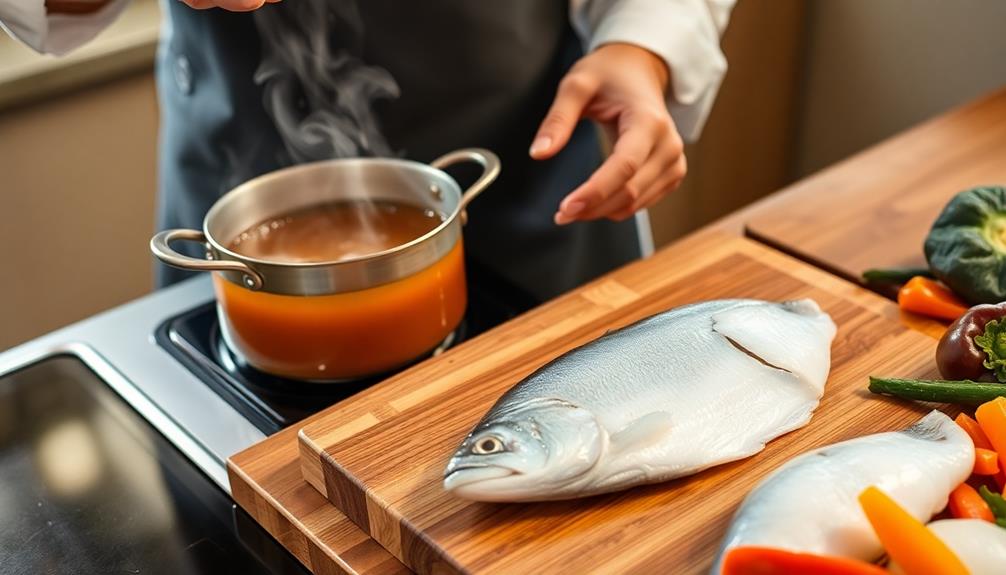
With the dishes meticulously arranged, the next step is to carefully cook each component of the kaiseki meal. The chef's attention to detail shines through in the preparation of every element.
First, the rice is steamed to perfection, each grain fluffy and separate. Next, the fish is delicately poached, the flesh tender and glistening. Vegetables are simmered until just crisp-tender, retaining their vibrant colors and fresh flavors. Seasonings are added with a light touch, allowing the natural tastes to shine.
Timing is crucial, as the chef coordinates the cooking of multiple dishes to ensure everything is ready to be assembled and served at the same time. Each component is treated with reverence, cooked to its optimal state before being arranged on the plate.
The result is a harmonious balance of textures and flavors, a true celebration of the season's bounty. This meticulous approach to cooking is what elevates the kaiseki dining experience to an art form.
Step 5. Serve With Exquisite Presentation

The final step in crafting a true kaiseki masterpiece is the exquisite presentation of each dish. With meticulous attention to detail, you'll thoughtfully arrange the food on stunning lacquerware or porcelain plates. The placement of each component is carefully considered, creating a visually striking and harmonious display.
Garnishes play a crucial role, adding vibrant pops of color and texture. Delicate flowers, fresh herbs, and other natural elements are positioned with an artist's touch, enhancing the overall aesthetic.
The use of minimalist, asymmetrical compositions allows the ingredients to shine, showcasing their inherent beauty. Attention is paid to the contrast of shapes, sizes, and colors on the plate, creating a sense of balance and elegance.
The presentation must evoke a sense of anticipation, inviting the diner to savor each bite with all their senses. By elevating the visual experience, you'll transport your guests on a sensory journey, ensuring the kaiseki meal is a truly unforgettable culinary encounter.
Final Thoughts
Bidding farewell to this culinary odyssey, one can't help but be left with a profound sense of wonder and appreciation for the intricacies of the kaiseki experience.
This multi-course masterpiece is a true testament to Japan's rich culinary heritage, each dish meticulously crafted to evoke the essence of the season and the chef's artistic vision. As you savor the final bites, allow your senses to be transported, embracing the harmonious balance of flavors, textures, and visual artistry.
The kaiseki meal isn't just about feeding the body; it's a celebration of the senses, a mindful exploration of the fleeting beauty that each moment holds.
Carry this spirit of appreciation with you, whether recreating the experience at home or seeking out new culinary adventures. The lessons learned here – the importance of simplicity, seasonality, and the art of presentation – can be applied to elevate any dining experience, transforming it into a truly memorable journey.
